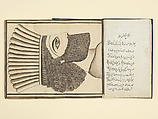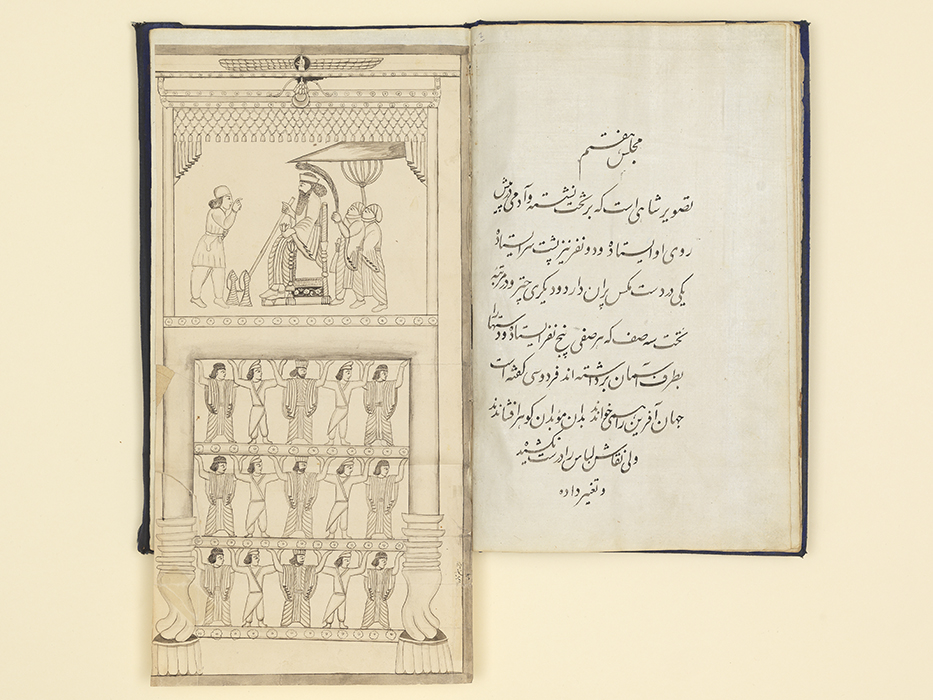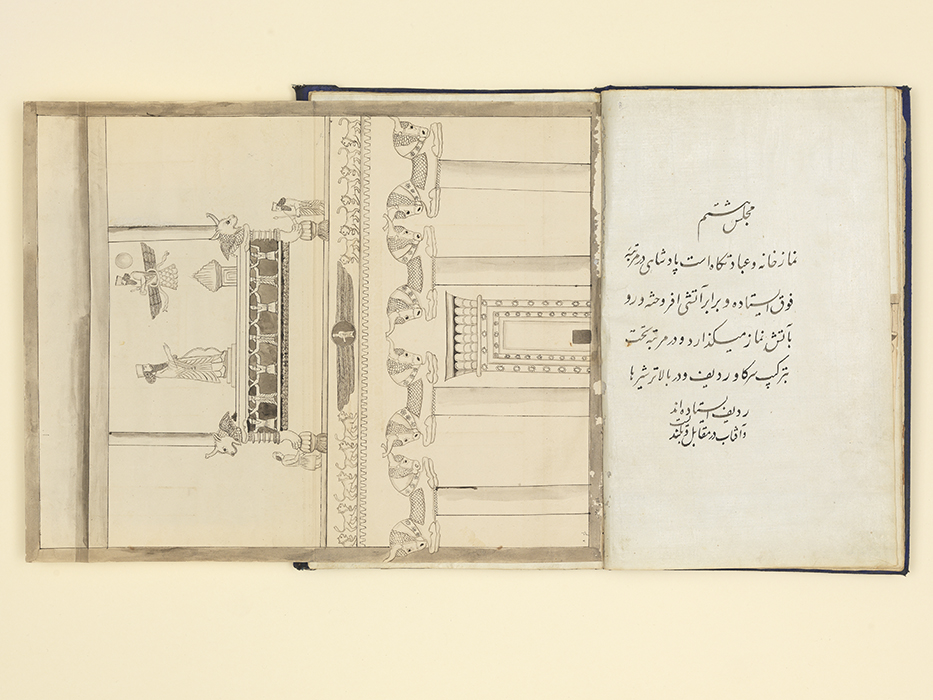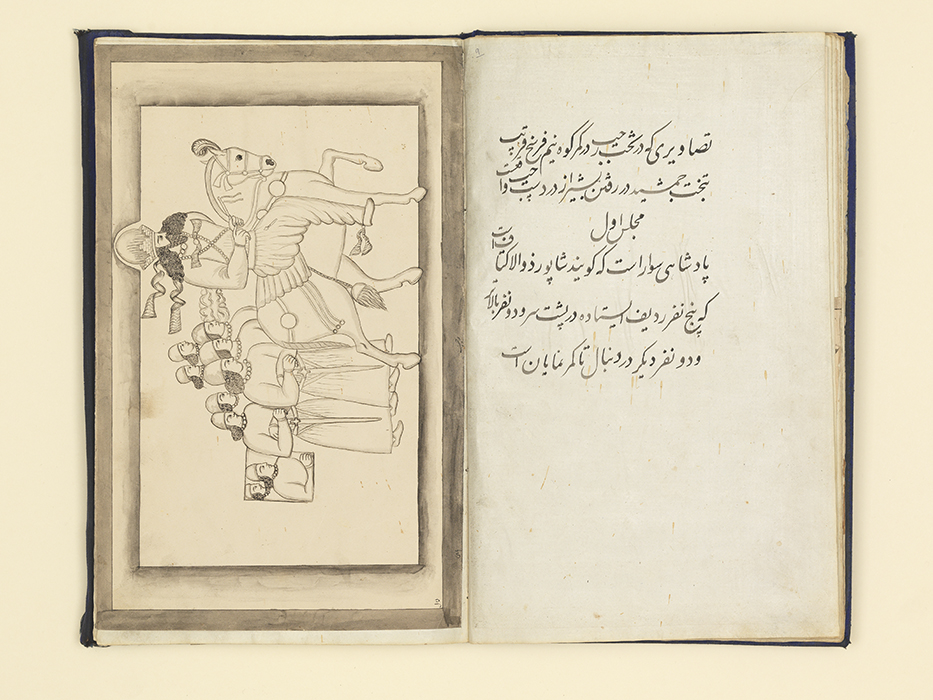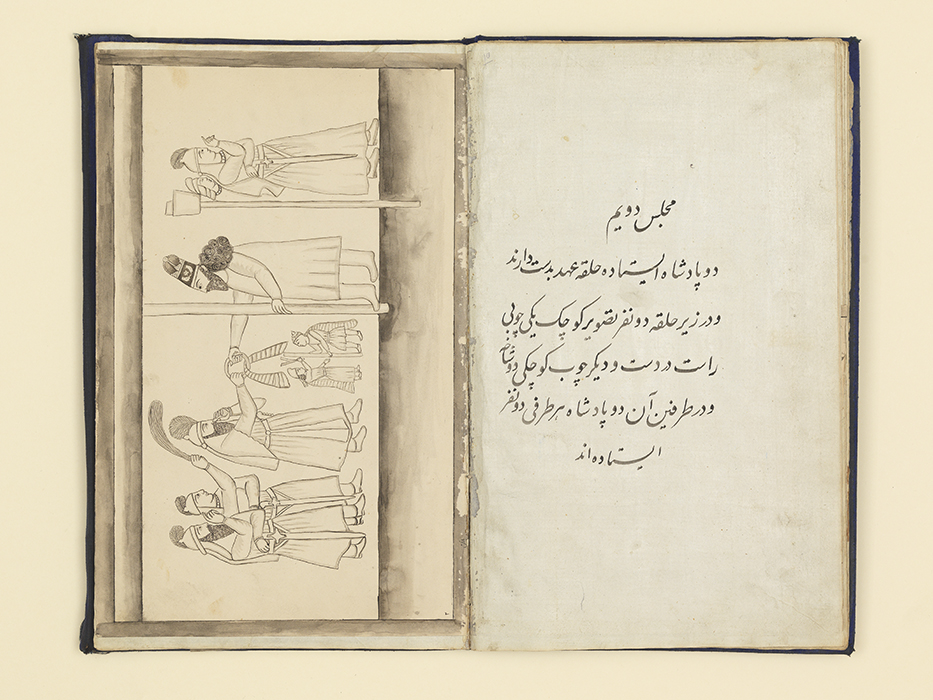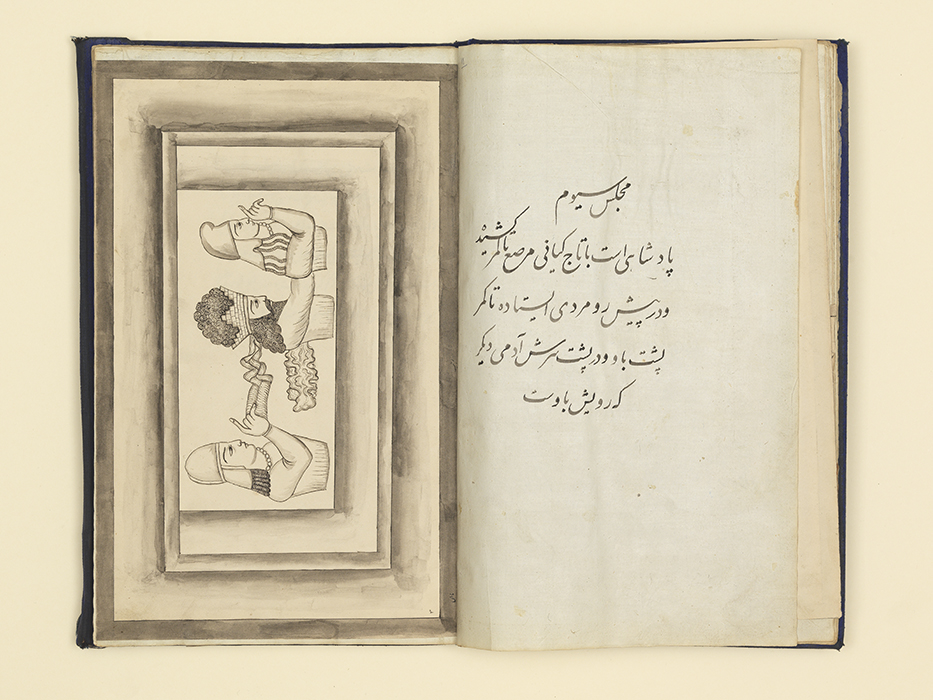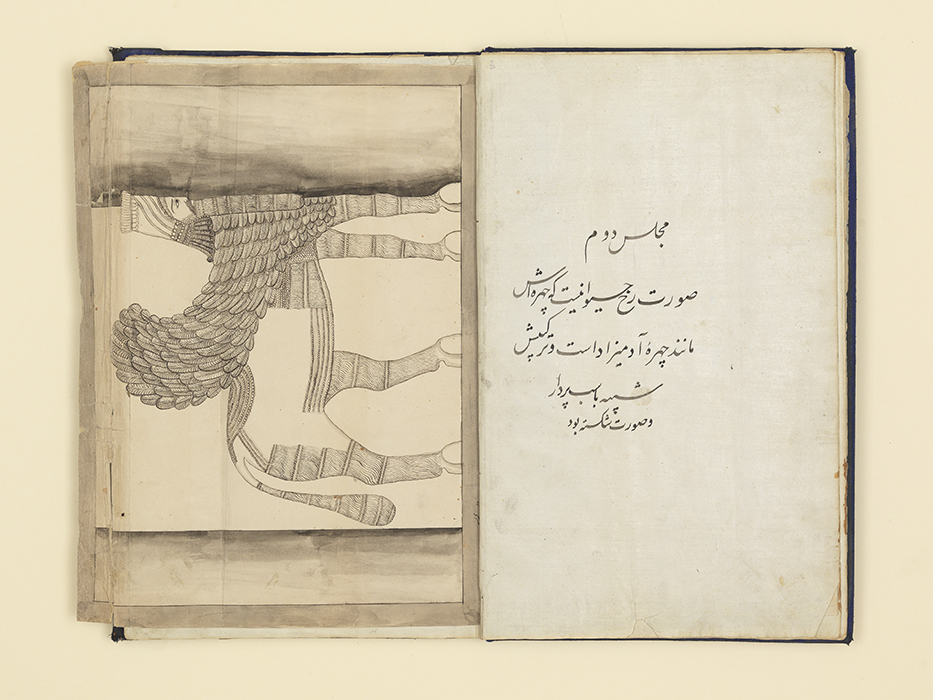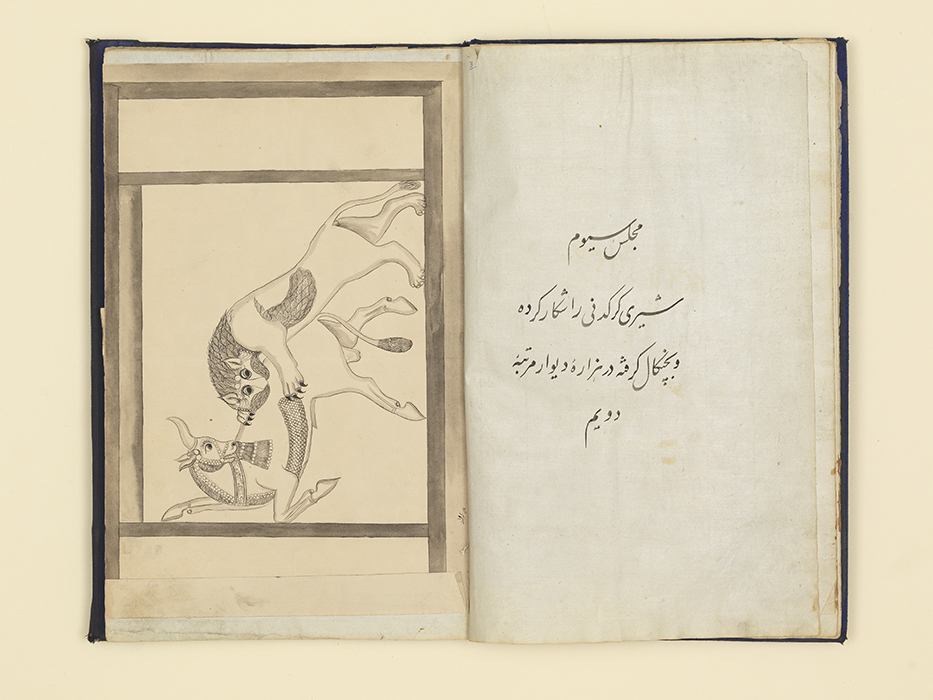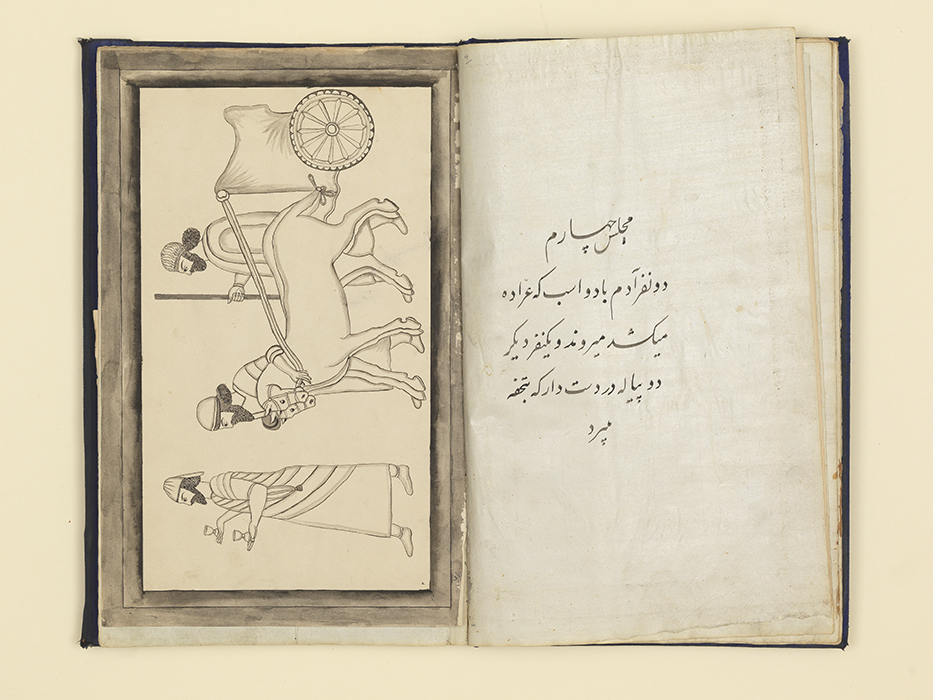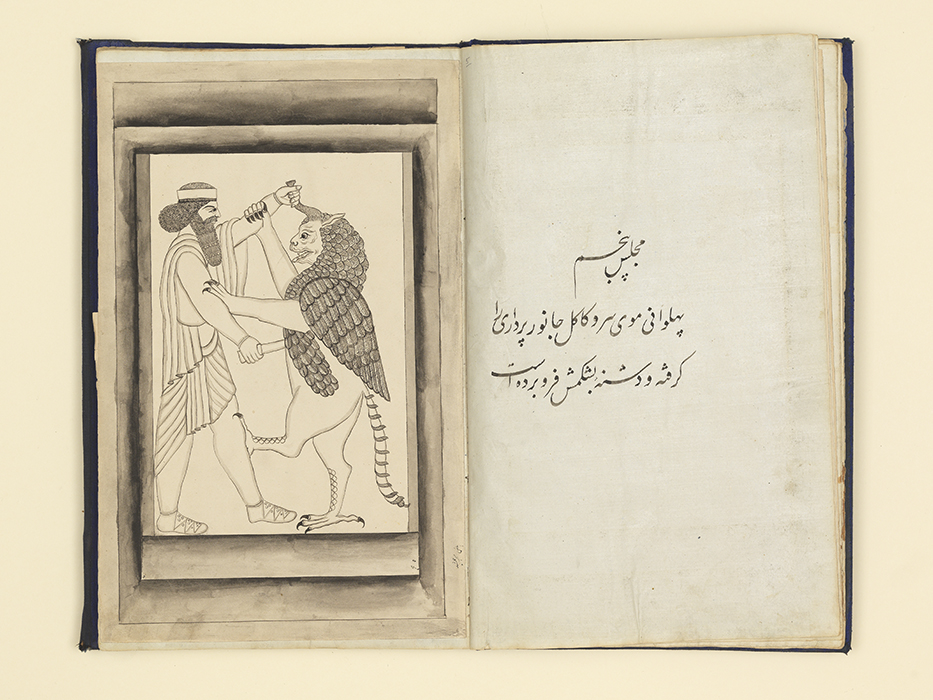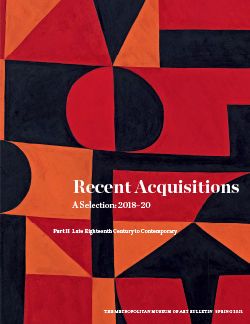Persian Travelogue: A Diary of a Journey through the region of Fars
Not on view
In the mid-1830s the French tutor to the Qajar princes in Tabriz, Louise de la Marinierre, undertook a journey through what is today Fars in southwestern Iran. Accompanied only by a scribe (‘Ali Akbar), an artist (Ahmad Naqqash) and a donkey, she visited ancient sites of Achaemenid (ca. 550-330 B.C.) and Sasanian (ca. A.D. 224-651) date, including the ruins of Persepolis and Qasr-e Abu Nasr, the royal tombs at Naqsh-e Rustam and Pasargadae, the rock reliefs at Naqsh-e Rustam, Naqsh-e Rajab, Barm-e Dilak, Tang-e Chogan, Sarab-e Bahram and Firuzabad, and the famous Cave of Shapur near the ancient city of Bishapur in the Zagros Mountains. The three of them recorded their journey in text and images, which they subsequently fashioned into an illustrated manuscript that Madame de la Marinierre presented to Mohammad Shah Qajar – her former pupil – in 1838.
The illustrations in the manuscript are characterized by Ahmad’s bold and precise hand. While all of the ancient monuments he draws are clearly identifiable, some of the images show inventiveness or misunderstanding on his part. For example, in rendering the reliefs of the Persian king as a hero fighting a horned griffin that adorn many doorjambs at Persepolis, he has drawn the creature’s horn as hair. Moreover, rather than drawing damaged parts of reliefs he leaves them blank, contributing an eerie quality to some of his pictures.
This manuscript is unique because it was intended for Iranians. Most 19th century travelers to Iran wrote about its antiquities for audiences back home in Europe. In this case, however, Madame de la Marinierre, prompted by her own Classical education and by the Qajar dynasty’s fascination with the ancient past, worked with Iranian collaborators to present Achaemenid and Sasanian remains to an Iranian audience.
Due to rights restrictions, this image cannot be enlarged, viewed at full screen, or downloaded.
This artwork is meant to be viewed from right to left. Scroll left to view more.
